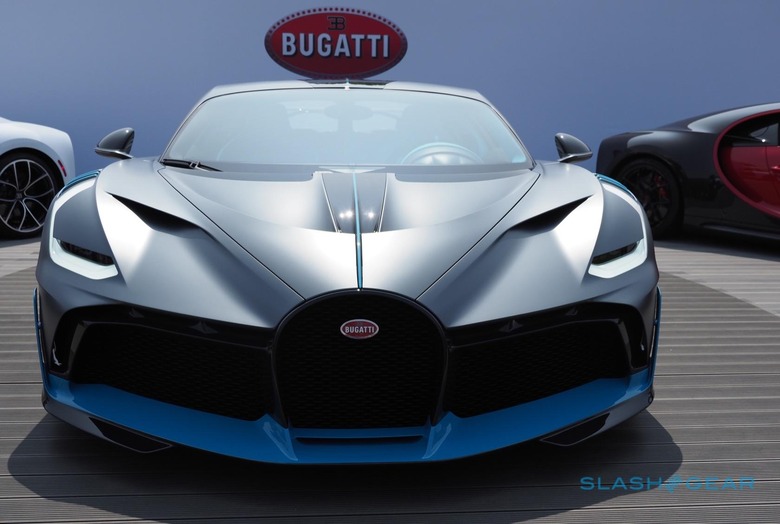The Bugatti Divo Takes A New Route To Extreme Performance
A new Bugatti doesn't come along every day, but just two years after the record-breaking Chiron launched, there's already a fresh example: the Bugatti Divo. Clearly a sibling of the existing car, the Divo nonetheless diverges from the family in its main focus. Read on for five things you need to know about the Bugatti Divo.
Divo is a Chiron, but for cornering
Bugatti's last two flagship cars have earned superlatives in many ways, but at their core they've been about one key measure: straight line speed. With the 253 mph Veyron first, in 2005, and then the 261 mph Chiron in 2016, going ridiculously fast in one direction has been the automaker's primary claim to fame. No bad thing, but eventually life throws a turn at you.
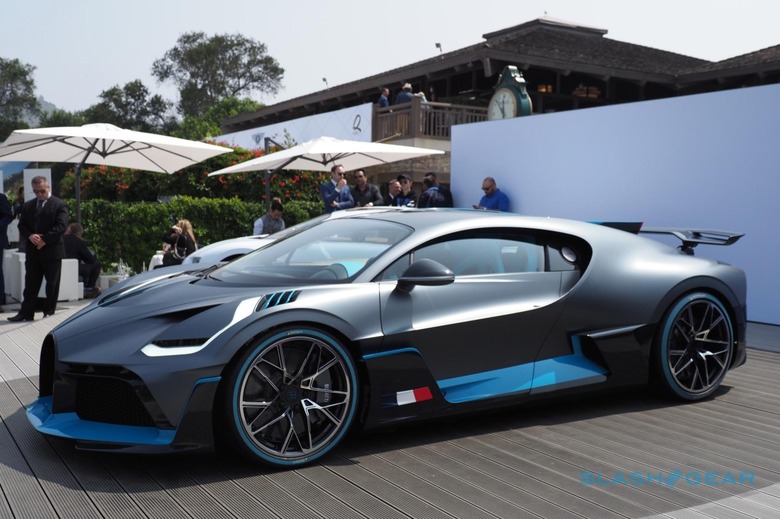
That's where the Divo comes in. The engine is the same, an 8.0-liter W16 that delivers a massive 1,479 horsepower, but the car overall is lighter than the Chiron. Only 77 pounds, but every little helps when you're at the cutting-edge of performance production cars.
Ironically, though, the Divo is actually slower than the Chiron, at least when it comes to top speed. Bugatti has artificially limited it to 236 mph, and there's no Top Speed mode to unlock that to a higher maximum. The justification for that is the Divo has much greater downforce, making it stickier in the corners. It works, too: Bugatti says that, on the Nardò handling circuit, the Divo can make it around a full eight seconds faster than a Chiron could.
It's cutting-edge tech with an old-school twist
Back when Bugatti first launched, in 1909, it had no small amount of success as a coachbuilder, making custom, one-off car bodies that would be installed onto existing chassis. The Divo is a push of sorts back toward those days, with the underpinnings of the Chiron donated in the name of creating a very different vehicle overall.
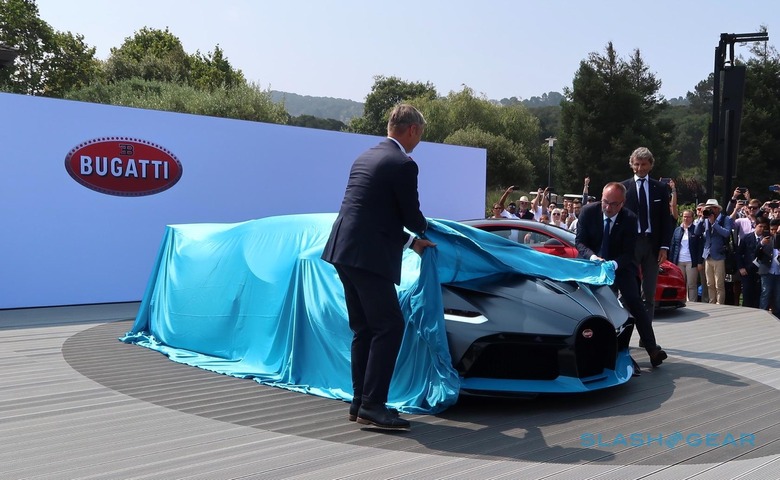
It was also an opportunity for newly-installed Bugatti President Stephan Winkelmann to make an instant impression on the company. He started the Divo project when he took the position at the beginning of 2018, with engineers and designers producing the car in just eight months. "When I took up my position at Bugatti at the beginning of the year," Winkelmann says, "I soon learnt that our customers and fans were waiting for a special vehicle which would tell a further story for the brand in addition to the Chiron."
A special car needs a special name, and Bugatti looked to its own history for that too. It's named after Albert Divo, the French racing driver who – at the wheel of a Bugatti Type 35 – twice won the Targa Florio race, in 1928 and 1929.
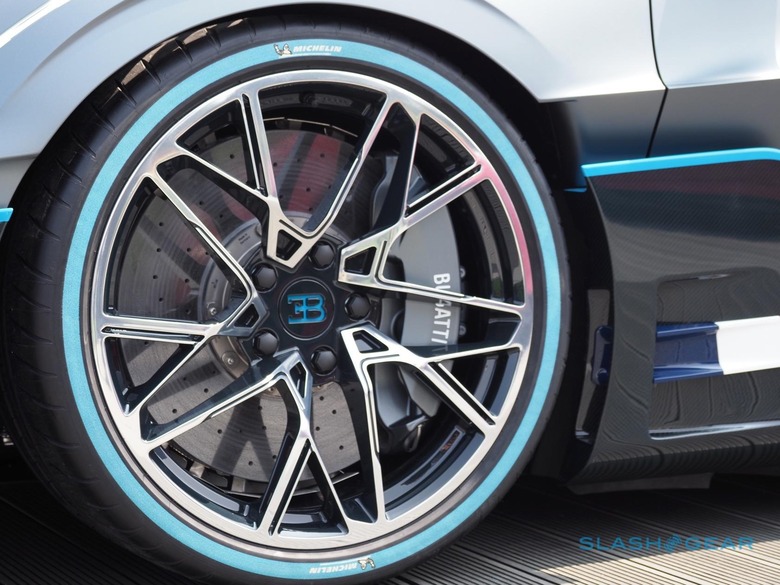
It's all about the aero
If you want to go fast in a straight line, you need minimal drag. If you want to stick to corners, however, you need downforce, and that's just what the Divo's primary changes deliver. Compared to a Chiron, the new car adds 198 pounds of extra downforce.
Each pound of that has been hard-earned. At the front, for example, there are new air intakes which help cut the car's effective cross-sectional area. They – and fins on the sides – create an "air curtain" too, which improves air flow over and around the Divo. A wide front spoiler has extra vents, guiding more cooling air into the body.
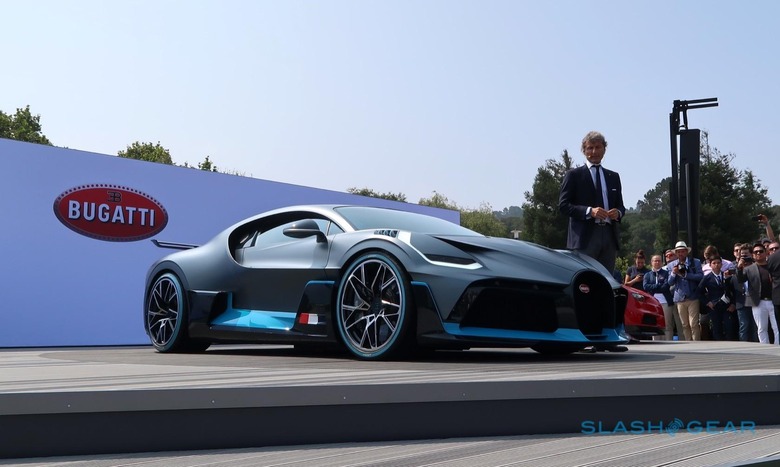
Over the roof, the new design forms a flow-optimized NACA air duct, feeding down into the reworked engine compartment cover. Changes to the wheel arch venting help cool the brakes more, while a new height-adjustable rear spoiler is at the back. That's 72-inches across – 23-percent wider than the spoiler on the Chiron – and can flip upright to act as an airbrake for extreme slowing.
Same silhouette, very different car
At first glance, there's no mistaking the Divo for anything but a Bugatti, and a Chiron-based Bugatti at that. Still, look a little longer and the differences between the cars begin to show themselves. Obviously the custom paintwork helps there – matte Titanium Liquid Silver on the top, and petroleum blue-tinted Divo Carbon carbon-fiber underneath, with Divo Racing Blue highlights – but there's more to it than color.
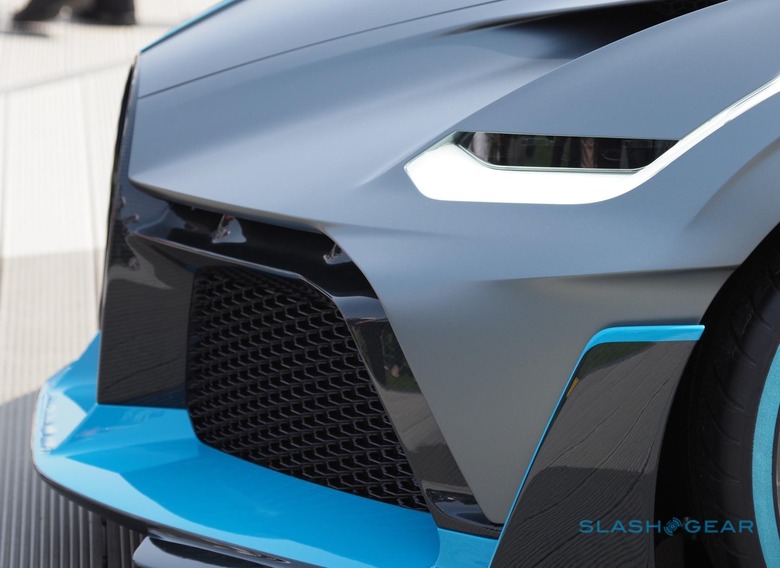
The side line of the Divo is slimmer, emphasizing the car's low, long proportions. Vertically-oriented lights at the front have a daytime running light at the outer edge, leaving the car looking wider. Lightweight LED headlamps were picked for their relatively small size: Bugatti's designers left the engineers only a 35mm deep space for the light opening. The Divo gets a custom light animation, too.
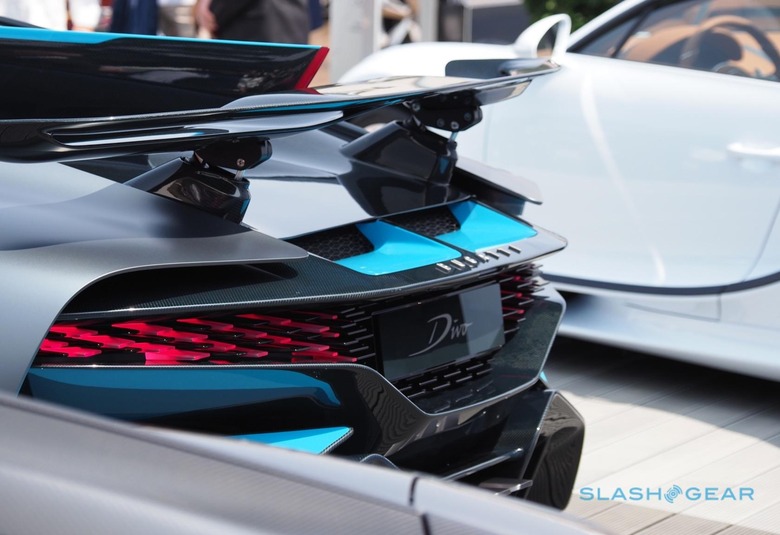
It's at the back that the differences are most obvious, however. The 3D lights are a part of the rear grille, and in part produced by 3D printing. It consists of clusters of lightweight fins, 44 of which light up. At the outer edges, the fins are wider to maximize the light output; toward the middle, they slim and the light fades.
Even if you can afford it, you're out of luck
No Bugatti is ever cheap, but the Divo is expensive even by the automaker's standards. Where the Chiron starts at $3m, and the Chiron Sport nudges that up to around $3.26m, the Divo comes in at $5.72m.
Now for the really bad news. Bugatti is only making forty of the Divo, a very limited production run that means the likelihood of ever actually seeing one on the road is rare. Even if you could afford the price tag, all forty cars have already been sold.

